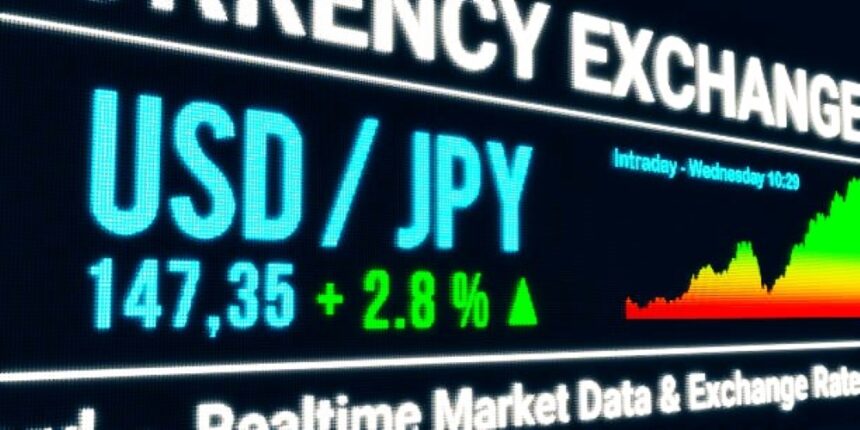Japanese yen rises as the USD struggles after weaker than expected employment growth figures announced on Friday.
On Monday, the Japanese yen (JPY) extended its advances for the third session in a row. The USDJPY pair falls as the US Dollar (USD) suffers following weaker-than-expected job growth statistics announced on Friday.
Japan’s current account surplus expanded to ¥2,849.9 billion ($17.78 billion), up from the previous ¥2,050.5 billion.
In May, Japan’s current account surplus grew for the 15th consecutive month. On Monday, the Ministry of Finance reported an increase in the current account to ¥2,849.9 billion ($17.78 billion) in May, up from ¥2,050.5 billion in the previous month and exceeding market forecasts of ¥2,450.0 billion.
Employment report fueled expectations that the Fed would start cutting interest rates sooner.
US Nonfarm Payrolls (NFP) exceeded market forecasts in June, while the rate of growth was slower than in May. In addition, the unemployment rate climbed in June. These events have fueled speculation among traders that the Federal Reserve (Fed) may begin interest rate decreases sooner rather than later.
According to the CME’s FedWatch Tool, rate markets are now pricing in a 70.7% probability of a September rate drop, up from 64.1% just a week ago.
Daily Market Movers: Japanese yen gains due to dovish attitude surrounding the Fed.
In May, Japan’s labor cash earnings increased by 1.9% year on year, accelerating from the 1.6% increase in April. climb, reaching the greatest level since January. However, this growth rate fell short of market expectations, which were for a 2.1% gain.
US nonfarm payrolls (NFP) rose by 206,000 in June, following a 218,000 gain in May. This amount exceeded the market’s expectation of 190,000.
The US unemployment rate increased to 4.1% in June from 4.0% in May. Meanwhile, average hourly earnings fell to 3.9% year on year in June from 4.1% the previous month, in line with market expectations.
Japanese yen continued rise is heightening intervention expectations.
OCBC strategists Frances Cheung and Christopher Wong note that the USDJPY continued rise is heightening intervention expectations. However, there is suspicion that authorities will evaluate the extent to which they allow additional devaluation before acting.
Austan Goolsbee, president of the Federal Reserve Bank of Chicago indicated on BBC Radio on Wednesday that returning inflation to 2% will take time and that more economic data is required. However, Fed Chair Jerome Powell stated on Tuesday that the central bank is returning to a disinflationary path, according to Reuters.
The minutes of the Federal Reserve’s June 11-12 monetary policy meeting, released on Wednesday, indicated that Fed members were in a waiting posture. “Some participants emphasized the Committee’s data-dependent approach, with monetary policy decisions being conditional on the evolution of the economy rather than being on a preset path.”
Rabobank FX analysts noted on Wednesday that yield differentials appear to be critical to the USDJPY outlook. They claimed that foreign exchange intervention could be impending due to the weakening of the Japanese yen, which is putting downward pressure on consumer confidence.









